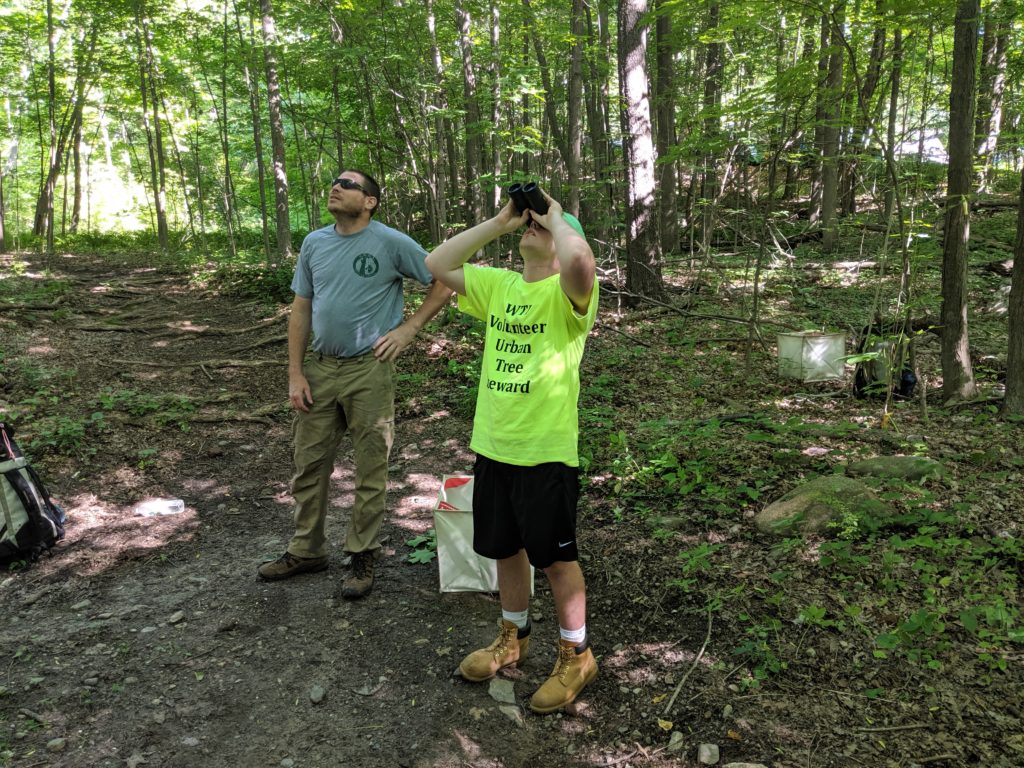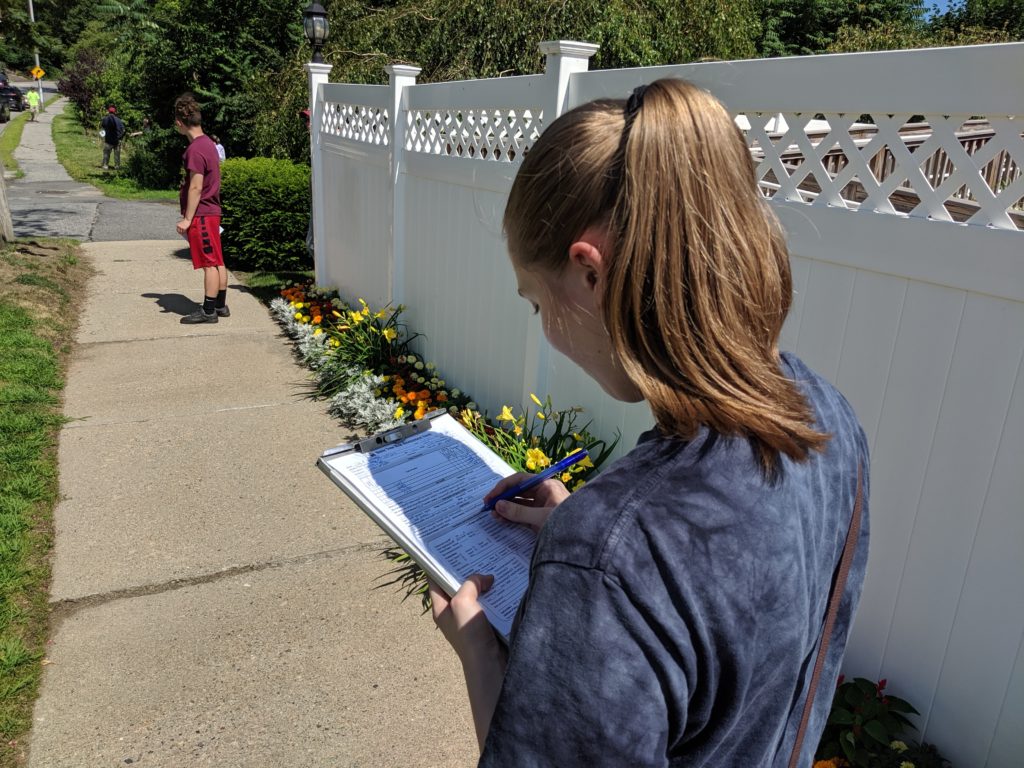
By Derek Lirange
In the third week of New England Botanic Garden at Tower Hill’s Young Adult Foresters (YAF) program, the summer employment program for youth to work as part of the Worcester Tree Initiative (WTI) Department’s team, our cohort had two great training opportunities, shadowing a team of tree climbers working for the USDA’s Animal and Plant Health Inspection Service (APHIS) who search for Asian Longhorned Beetle, and learning about tree health and risk assessment from our partner and long time arborist, AJ Elton. These opportunities to observe and learn from professionals in the green industry are one of the things we are proudest of offering to the young people on our team. Many of them have an interest in the environment and these experiences will help to guide them as they make decisions about their future.
In our time shadowing the climbing team, we took a short hike into local conservation land, Nick’s Woods, where four climbers ascended trees looking for pseudo-sites, false-positive signs of Asian Longhorned Beetle created by the climbers in previous years, and used for training purposes to ensure the surveyors know what to look for and that they are thorough. Having been created multiple years ago the climbers were at this time going in to remove the sites from the trees. Our students got to watch and learn about several different climbing techniques that are used by arborists, as well as the gear they use, and the things they need to know such as the variety of knots they frequently use and safety considerations of which they are always aware.
Tree climbing is a fun thing to watch and it was new to most of our crew. Getting to see it in practice, seeing people actually doing it as a career, and learning some of the tricks of the trade gave them something to think about.

They also got a new experience in assessing tree health and risk. AJ Elton trained our team using the International Society of Arboriculture’s Tree Risk Assessment Form. This is the same way that arborists with a Tree Risk Assessment Qualification (TRAQ) Certification gather information to determine a tree’s potential risk and make recommendations. The data sheet is thorough, asking the assessor to consider all factors, including a thorough evaluation of the tree’s condition from roots to leaves, an evaluation of site conditions, and an evaluation of potential impacts. As a team we walked through the significance of each field and then individually our YAFs filled out the form for themselves to determine the risk rating of trees in various conditions and locations.
This more technical element of the training stretched the students’ brains a bit further and forced them to look beyond the surface of a tree’s appearance to determine its conditions. A seemingly healthy red oak revealed upon closer look dead wood throughout the canopy and some suspicious soft, black cankers on the roots. A tree which looked bushy and full of leafy life from a distance turned out to have large quantities of decaying wood on the trunk. These deeper dives allowed our students to step into the role of a professional arborist and get experience that they can use, either in future studies or even just at their own homes.
We hope that the experiences we are giving our team, from learning from professionals to developing skills of their own, will help them to make informed choices about their own career paths and maybe help them along the way.
Derek Lirange is a community forester for New England Botanic Garden at Tower Hill.
